Military Knowledge: Zulfiqar Main Battle Tank
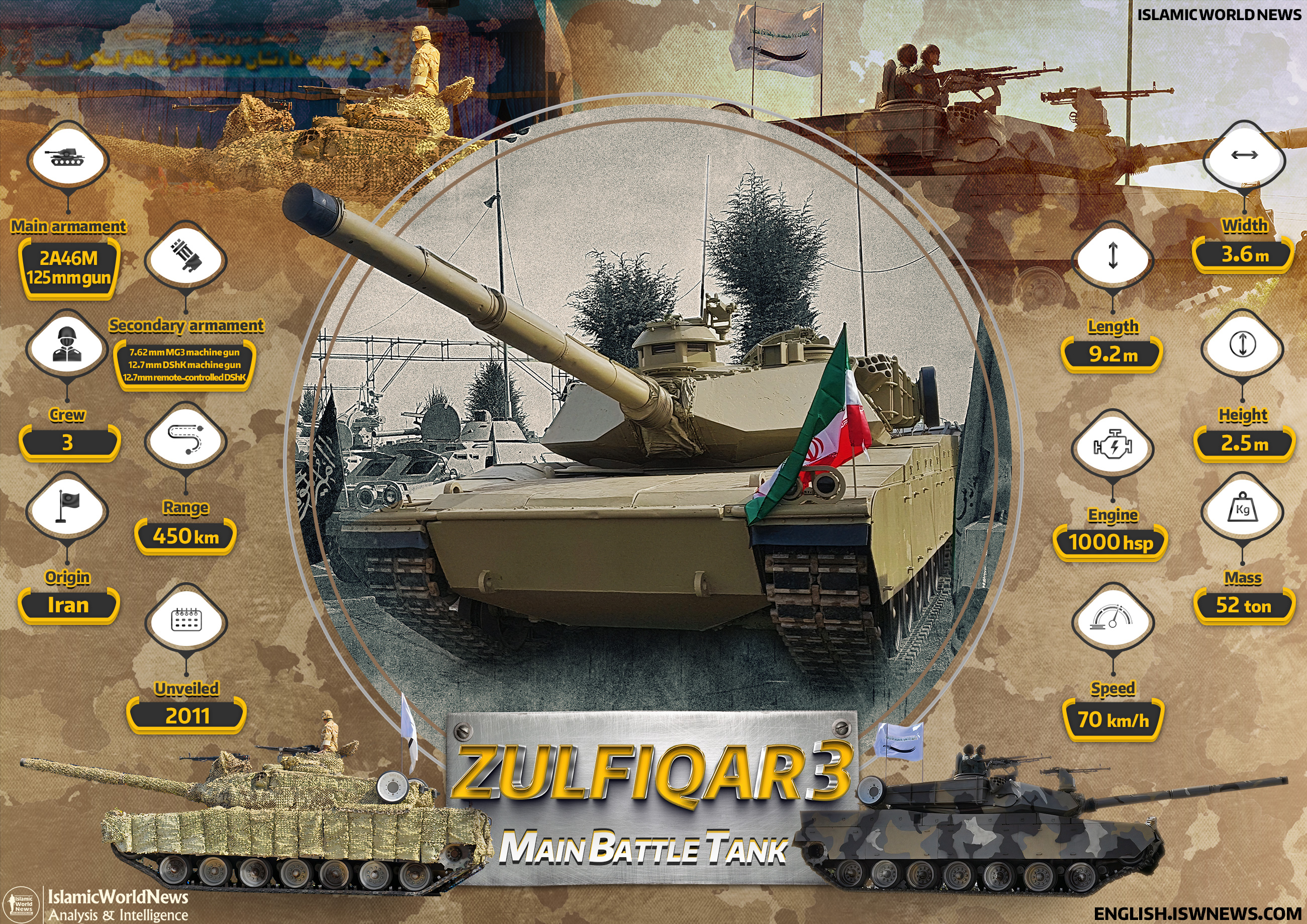
The Zulfiqar tank is the first main battle tank (MBT) of Iran, which has been designed and developed since 1993 based on the experiences of the Islamic Republic of Iran Army during eight years of the Holy Defense (Iraq-Iran war) and in order to meet the needs of the ground forces. So far, the Zulfiqar tank has been designed, developed, and built in three versions by the Research and Self-Sufficiency Jihad organizations of the Ground Forces of the Islamic Republic of Iran Army.
History:
The first prototype of the Zulfiqar tank is known as Zulfiqar-1. This tank was first introduced in 1994. According to studies, the design and construction of the tank were carried out by Brigadier General Mir-Younes Masoumzadeh, the first head of the Research and Self-Sufficient Jihad organizations of the Ground Forces of the Islamic Republic of Iran Army. It is likely that the design and construction of this tank took place from 1988 to 1994. Brigadier General Masoumzadeh maintained the position of presiding the Research and Self-Sufficient Jihad organizations until his retirement in 1999.
The Shahid Kolahdooz Industrial Complex was inaugurated in 1988. This military industrial unit was affiliated with the Ministry of Defence and Armed Forces Logistics and its main goal was to produce armored equipment, especially the Zulfiqar tank. Despite its main goal, this complex also produces various types of railway wagons and heavy equipment due to its high industrial capacity. However, despite the main goal of creating this industrial center for the production of the Zulfiqar tank, the number of Zulfiqar tanks seen in service is not high at all. Some sources claim that 100 units of Zulfiqar-1 tanks have been produced; however, because the military industry is not being publicized, it is not easy to verify this number outright.
The information about the timing of the introduction of the Zulfiqar-2 tank is not complete and the available data is unclear. However, based on the existing research, it is likely that the Zulfiqar-2 tank was introduced between 1999 and 2004. High-quality images of the Zulfiqar-2 tank are not available. The turret of the Zulfiqar-2 has undergone significant changes and is longer in comparison to the initial version. At least one wheel has been added to the chassis of the Zulfiqar-2 compared to the initial version. It is likely that significant changes were made to the turret and crew size during the purchase, production, and deployment of T-72 tanks in the mid-1970s. The Zulfiqar-2 tank likely uses a similar automatic loader to the T-72 tank and the crew size has been reduced to 3 personnel.
The Zulfiqar-3 tank was first seen during the military parade in April 2011. This tank also uses the chassis of the Zulfiqar-2 and its turret has a strong resemblance to that of the Zulfiqar-2. In 2016, changes were made to the Zulfiqar-3, mainly related to the design of the front part of the turret. The version unveiled in 2016 is also referred to as Zulfiqar-3E.
Design:
As mentioned in the history section, the Zulfiqar-1 has fewer wheels in comparison to later versions. Despite claims that the chassis of the Zulfiqar-1 is similar to the M60 or M48, a closer examination of the chassis reveals that it enjoys an independent designation.
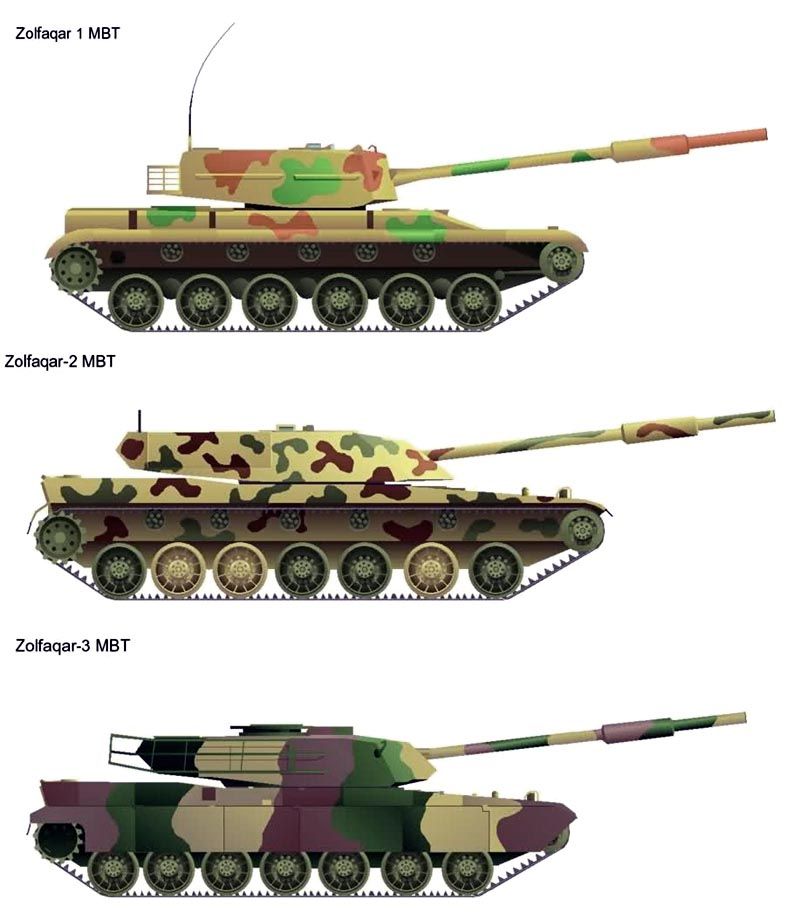
The Zulfiqar-1 chassis uses a more modern design than the M48, and the only similarity between the Zulfiqar chassis and the M48 is the number of wheels, which is 7. The chassis of M48 is made by casting method and at a glance, the difference between Zulfiqar and M48 chassis is obvious.
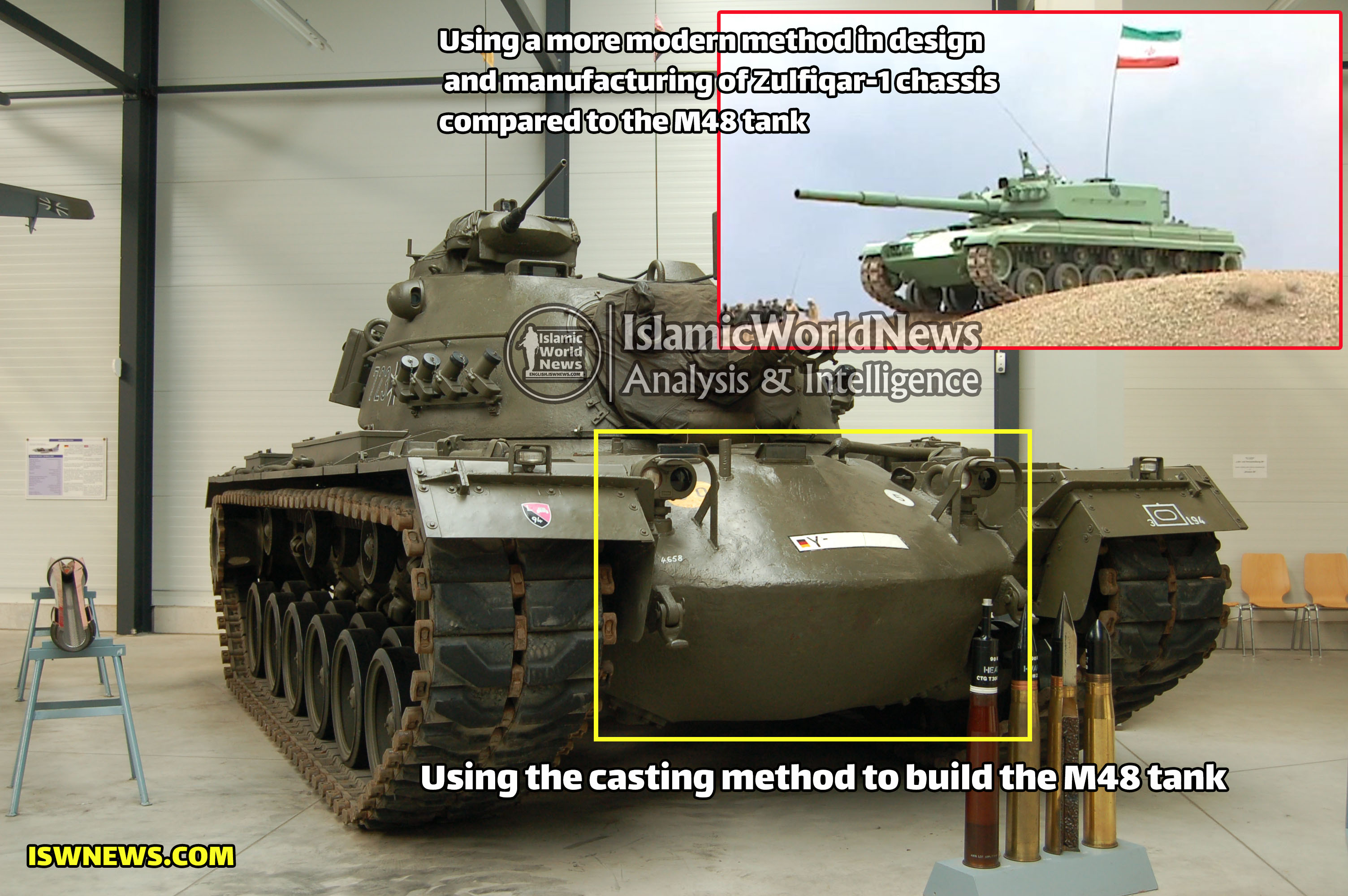
Regarding the similarity of the Zulfiqar-1 tank with the M60 tank, it can be said that the most similarity can be seen in the chassis of these two tanks. Both have the same number of wheels and the same shape in front of the chassis. However, the chassis height of the Zulfiqar tank is less. For this reason, five wheels have been used instead of three supporting wheels above, so that the reduction of the chassis height does not interfere with the performance of the wheels and chains on rough roads. The reduction in height and the applied changes can also indicate a change in the suspension system. According to the mentioned points, the Zulfiqar-1 chassis, despite its similarity with the M60, has used an independent design.
Due to the similarities between Zulfiqar-1 and M60 designs, many experts believe that the AVDS-1790 engine with 1000 horsepower belonging to the M60 tank was used in Zulfiqar.
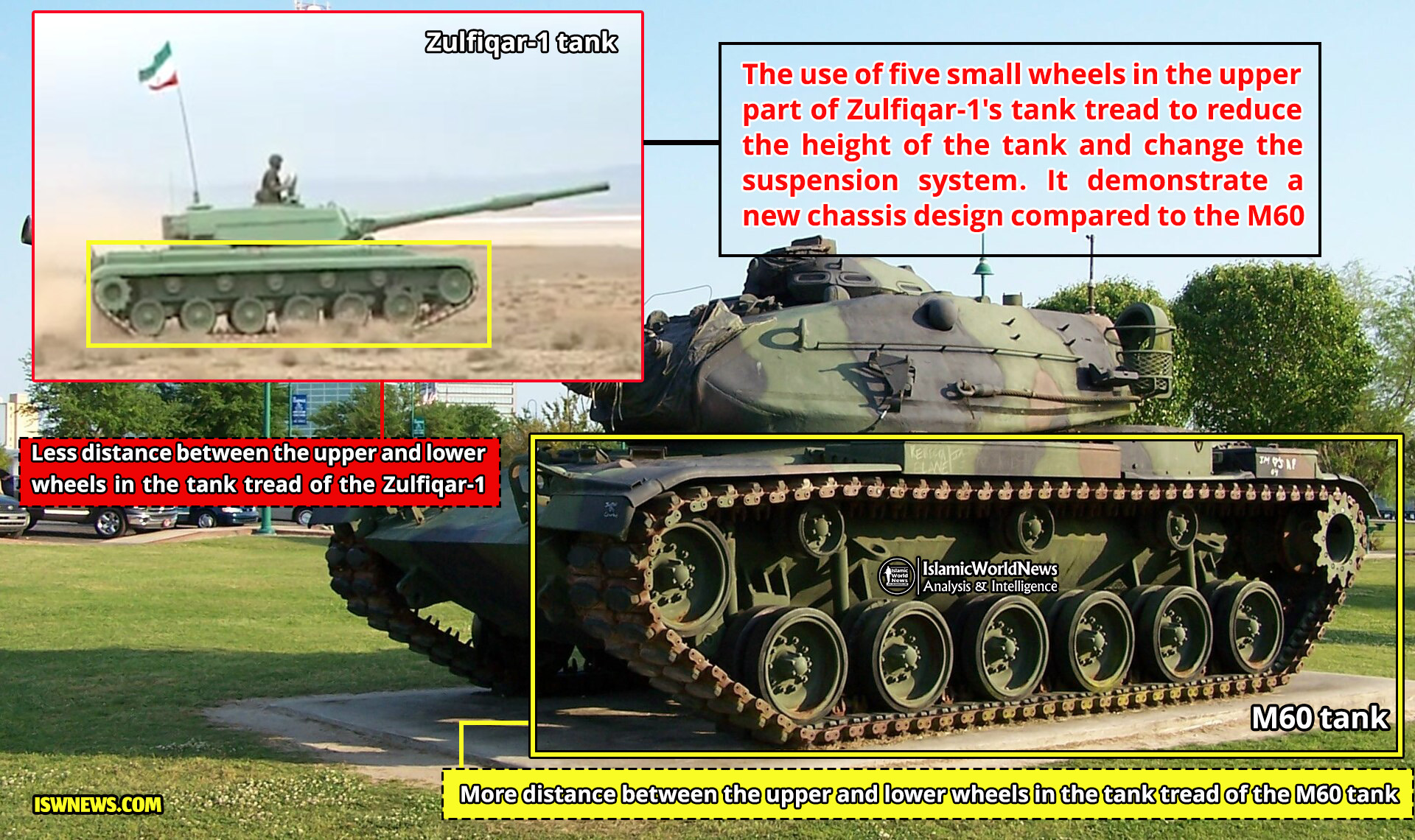
The designers of the Zulfiqar-1 tank have paid attention to reducing the height of the chassis to achieve greater stealth. For this purpose, small wheels are used more in the top of the tank tread. The reason for this is to prevent the interference of the wheels and chains on the roads with high unevenness and also reduce the damage of the wheels or chains during the movement.
The design of the Zulfiqar 2 and 3 chassis is very similar to the American Abrams chassis at first glance. It seems that in the process of designing the Zulfiqar 2 and 3 chassis, an attempt has been made to present a modern design based on the Abrams chassis.
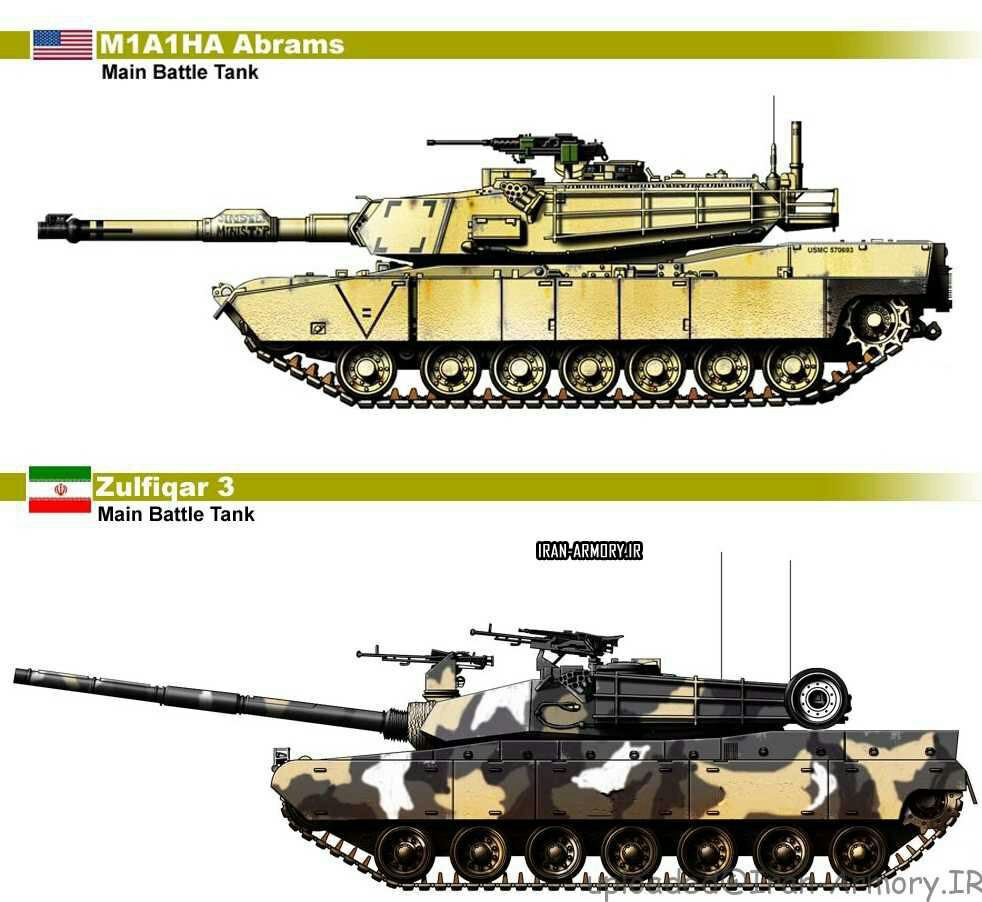
Review of Zulfiqar-3 tank:
Zulfiqar-3 tank is an Iranian main battle tank. This tank is the result of eight years of holy defense experience and the construction of Zulfiqar-1 tank in 1993.
Zulfiqar-3 tank uses 125mm 2A46 gun. According to the image documents, this gun was also present on Zulfiqar-1 from the very beginning. Most likely, at first, Iran tried to buy western types of guns, because the combat organization of the Iranian army is based on western tools, But due to Western sanctions against Iran, the Russian 2A46 125 mm gun was used. This gun was available on the captured tanks of the Iraq war, and considering the economic conditions of Russia after the collapse of the Soviet Union, it was possible to buy it from Russia.
In the mid-1990s, Iran succeeded in buying and producing the T-72 tank from Russia. This tank was imported into the country as a kit and assembly operations were carried out in Iran. This caused Iran to use the automatic loading system of the T-72 tank in addition to the 125 mm gun in the next samples of Zulfiqar. Today, Iran itself is the producer of 125mm 2A46 gun under Russian license.

The effective range of the gun used in the Zulfiqar-3 tank is about 3000 km. To increase the accuracy of this gun, the KAT-72 fire control system made in Iran has been used. This fire control system is the result of technology transfer and production of Slovenian EFCS-3-55 system. This system enables the Zulfiqar tank to shoot at a moving target at a distance of 2000 km while the Zulfiqar tank itself is moving. Also, the KAT-72 fire control system allows the Zulfiqar-3 tank to hit the first shot at a distance of 2,200 meters in a stationary state.
This tank uses a laser range finder produced by SAIRAN company, which can measure the distance up to 10,000 meters with high accuracy. The fire control system also uses wind sensor, temperature sensor and gun deviation sensor.
The Zulfiqar-3 tank uses a 360-degree periscope for the commander, a day and night vision site for the gunner, and a periscope for the gunner. Also, the tank includes 12 smoke grenade launchers (6 on each side).
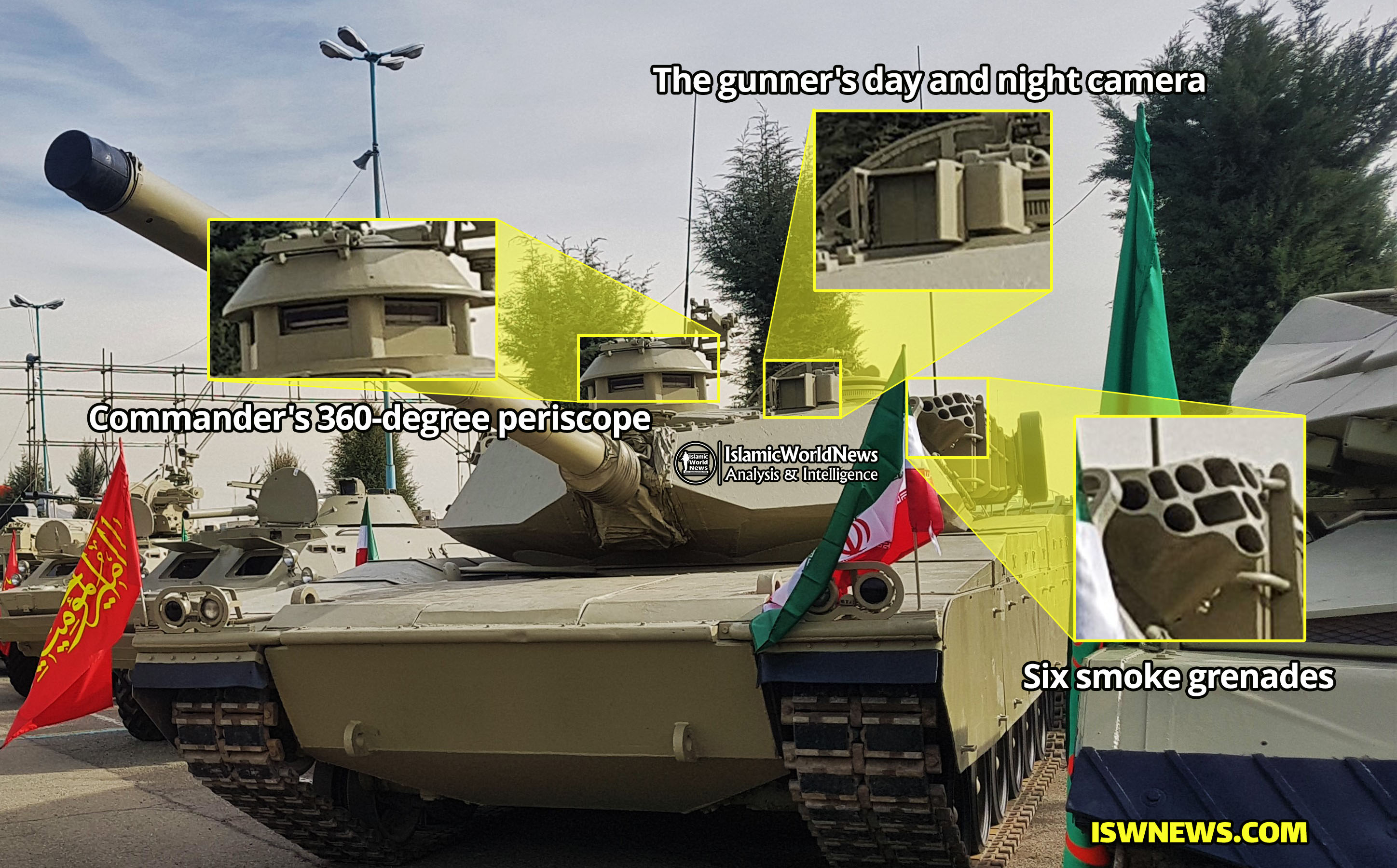
In the prototypes, in addition to the main 125 mm gun, a 12.7 mm Dshk machine gun for the commander and a 7.62 MG3 machine gun for the gunner are installed as secondary weapons on the tank. The machine guns have no remote control and the tank crew must get out of the tank to use them. But in more advanced models of Zulfiqar 3, a Dshk machine gun with remote control capability has also been added to this section.
The point that attracts attention in this section is the use of three machine guns on the tank. In general, using this number of machine guns on today’s modern tanks is not customary and is considered excessive. Also, remote controlled machine guns are used in modern tanks today. Having a remote controlled machine gun for the gunner and commander in urban warfare can be much more practical than the current arrangement. Because it keeps the crew away from the enemy’s direct fire and provides a large volume of fire without rotating the turret in several directions.

In some published images of the Zulfiqar-3 tank, thermal camouflage nets have been used for greater concealment and to increase the degree of protection.
The driver in the Zulfiqar-3 tank is located in the middle and almost below the junction of the gun and the turret. This location is similar to the location of eastern tanks. Regarding the periscope or surveillance camera for the driver, there is no item on the tank, but it is possible to install and use these items, similar to the Karrar tank.
Read more: Military Knowledge: Karrar Main Battle Tank
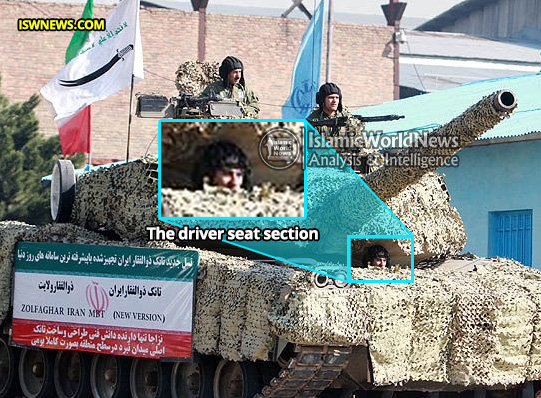
The exact specifications of the engine used on the Zulfiqar-3 tank are not available. But speculation predicts the existence of an engine with a minimum power of 1000 horsepower. Based on the power of 1000 hp, the M60 tank engine named AVDS-1790 and the Ukrainian 6TD engine with a maximum power of 1200 hp and the Russian V92 engine with a power of 1000 hp (used in the T-90A) are available for the Zulfiqar-3 tank.
Zulfiqar-3 engine with 1000 horsepower and 52 tons of weight gives this tank a thrust to weight ratio of 20 horsepower per ton, which is a desirable number.
Specifications of the Zulfiqar 3 tank:
Type: Main Battle Tank
Country of Origin: Iran
Producer: Jihad self-sufficiency of the ground forces of the Islamic Republic of Iran Army
Unveiled: 2012
Crew: 3 (driver, commander and gunner)
Length: 9.2 to 9.7 meters (including the gun barrel)
Width: 3.6 meters
Height: 2.5 meters
Engine: 1000 horsepower
Operational range: 450 km
Speed: maximum 60 to 70 km/h on the road
Mass: 52 tons
Main weapon: 125mm 2A46M gun with stabilizer
Secondary weapon: one 7.62 mm MG3 machine gun – one 12.7 mm Dshk machine gun – one 12.7 mm Dshk machine gun with remote control capability

More images of Zulfiqar-3 tank:
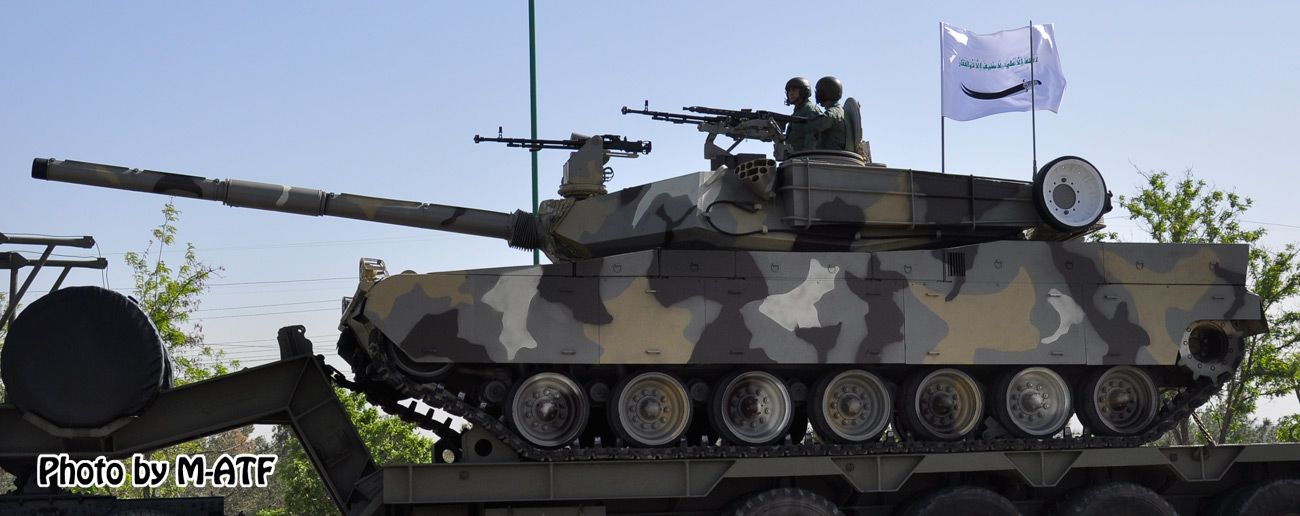

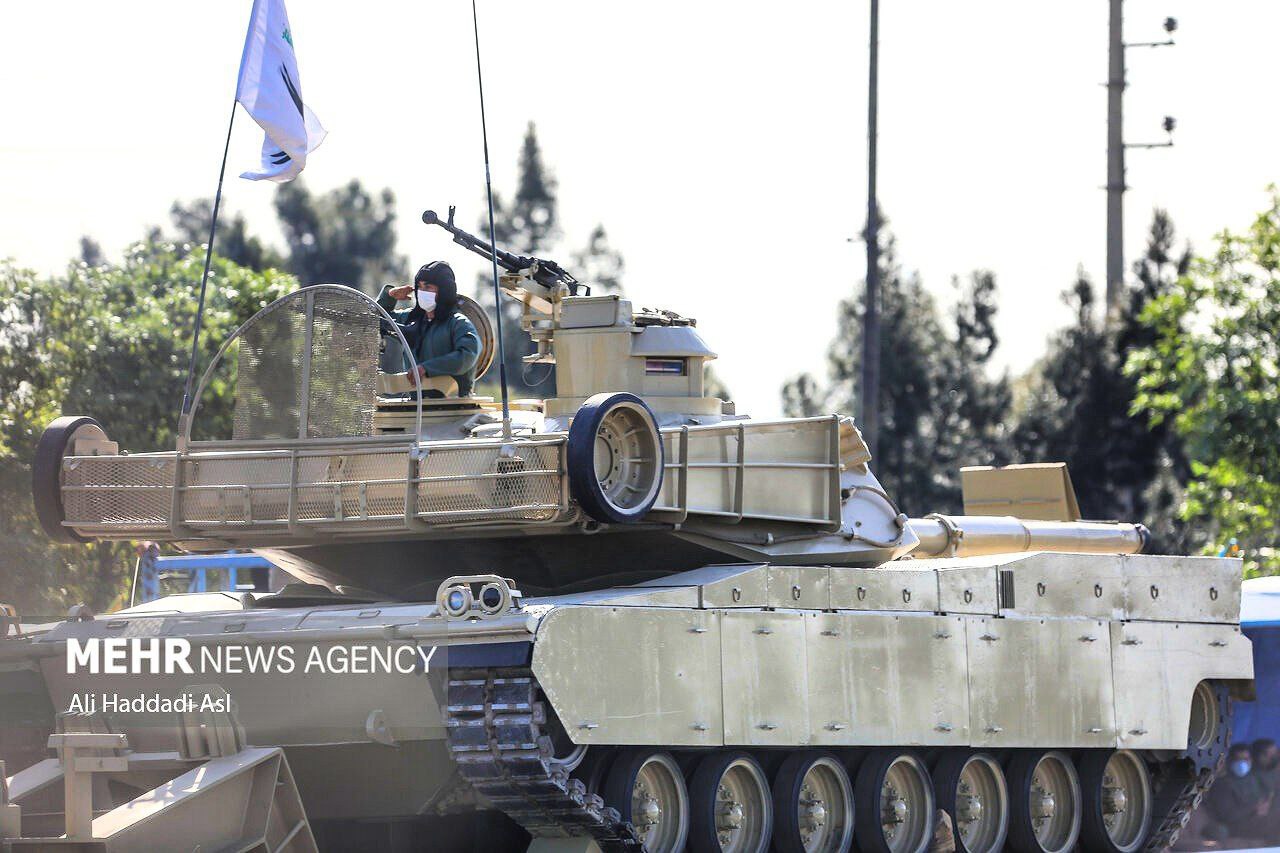


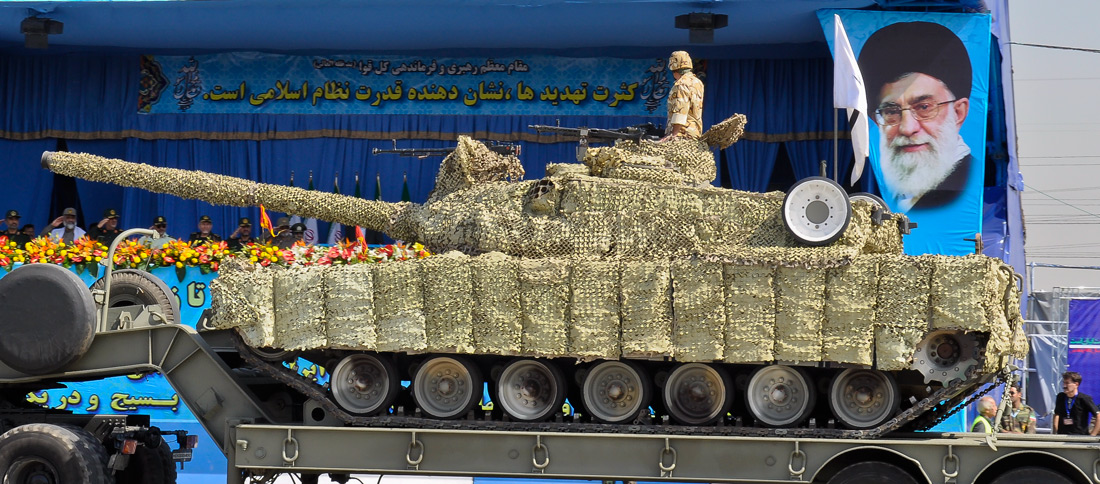
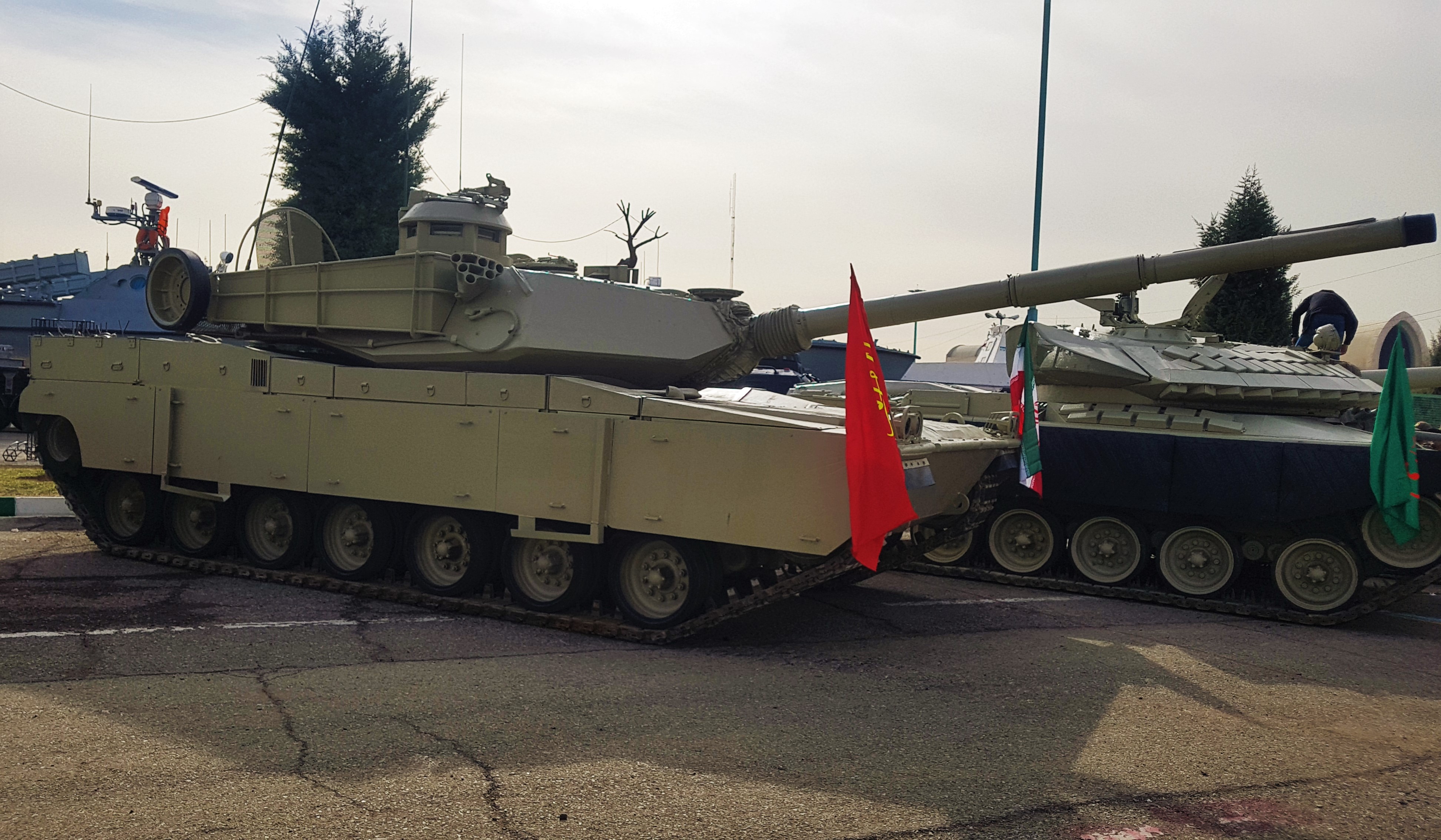


Infographics of Zulfiqar-3 tank in Russian, Arabic, Hebrew, Kurdish, Azeri and Farsi:
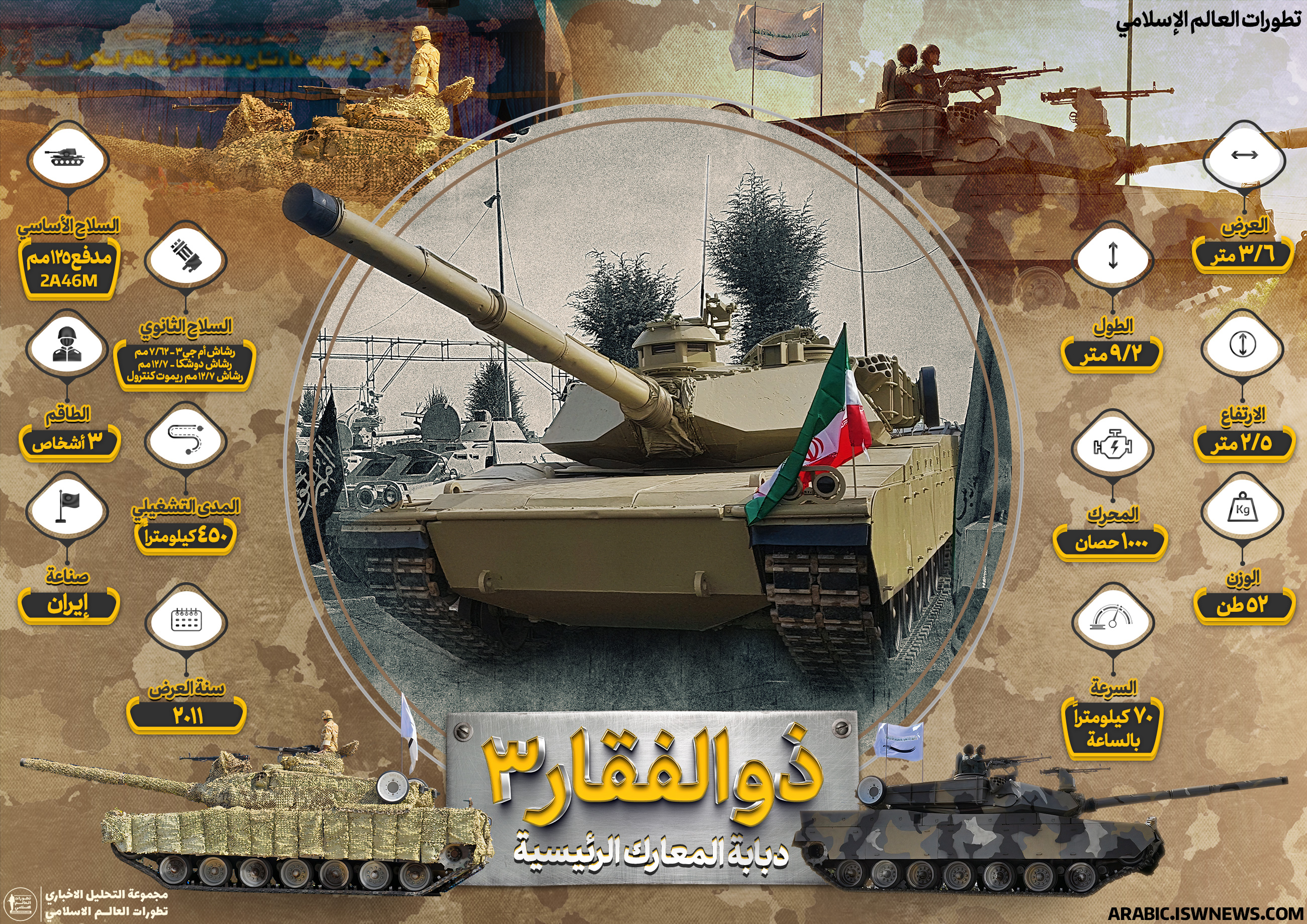
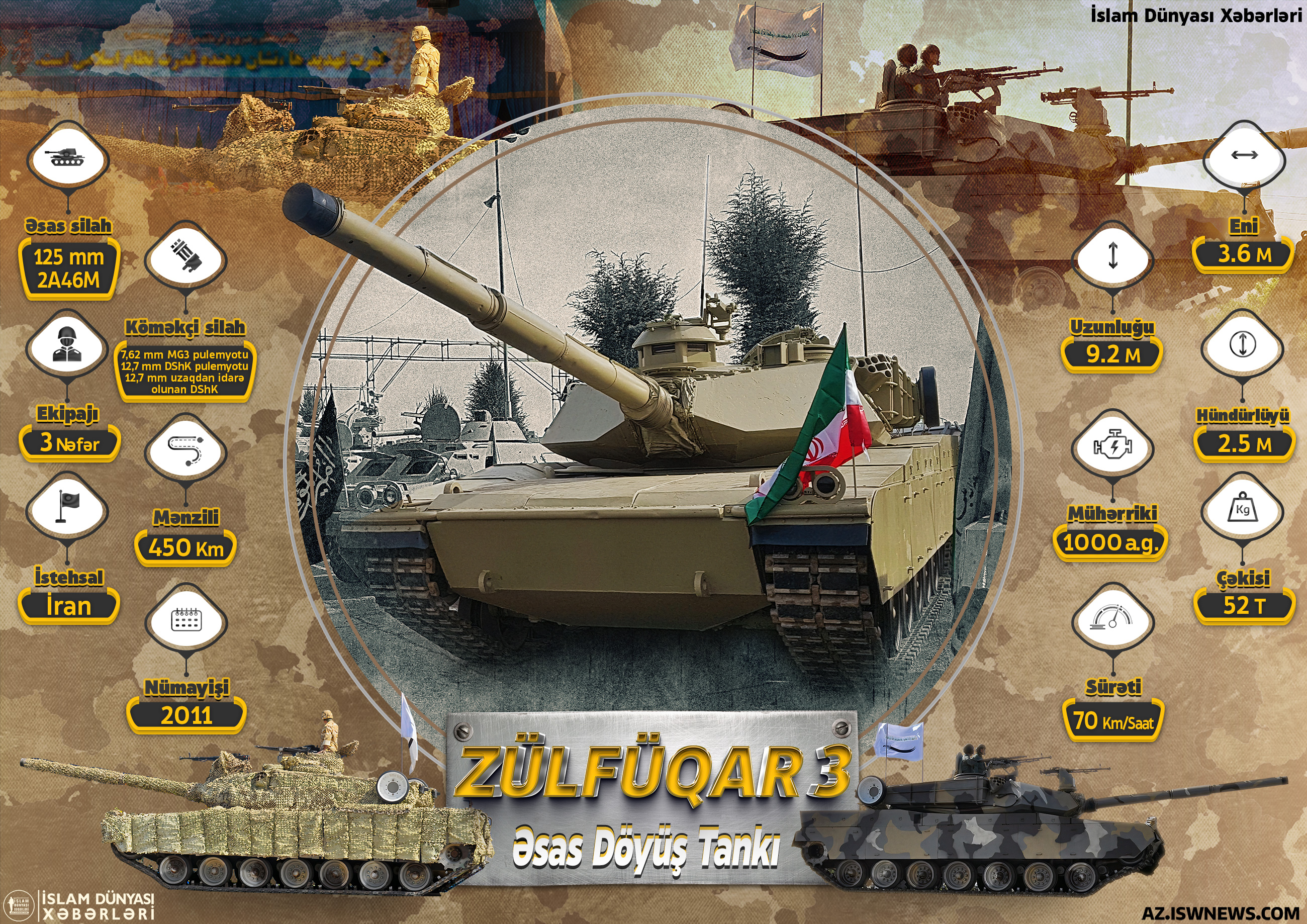

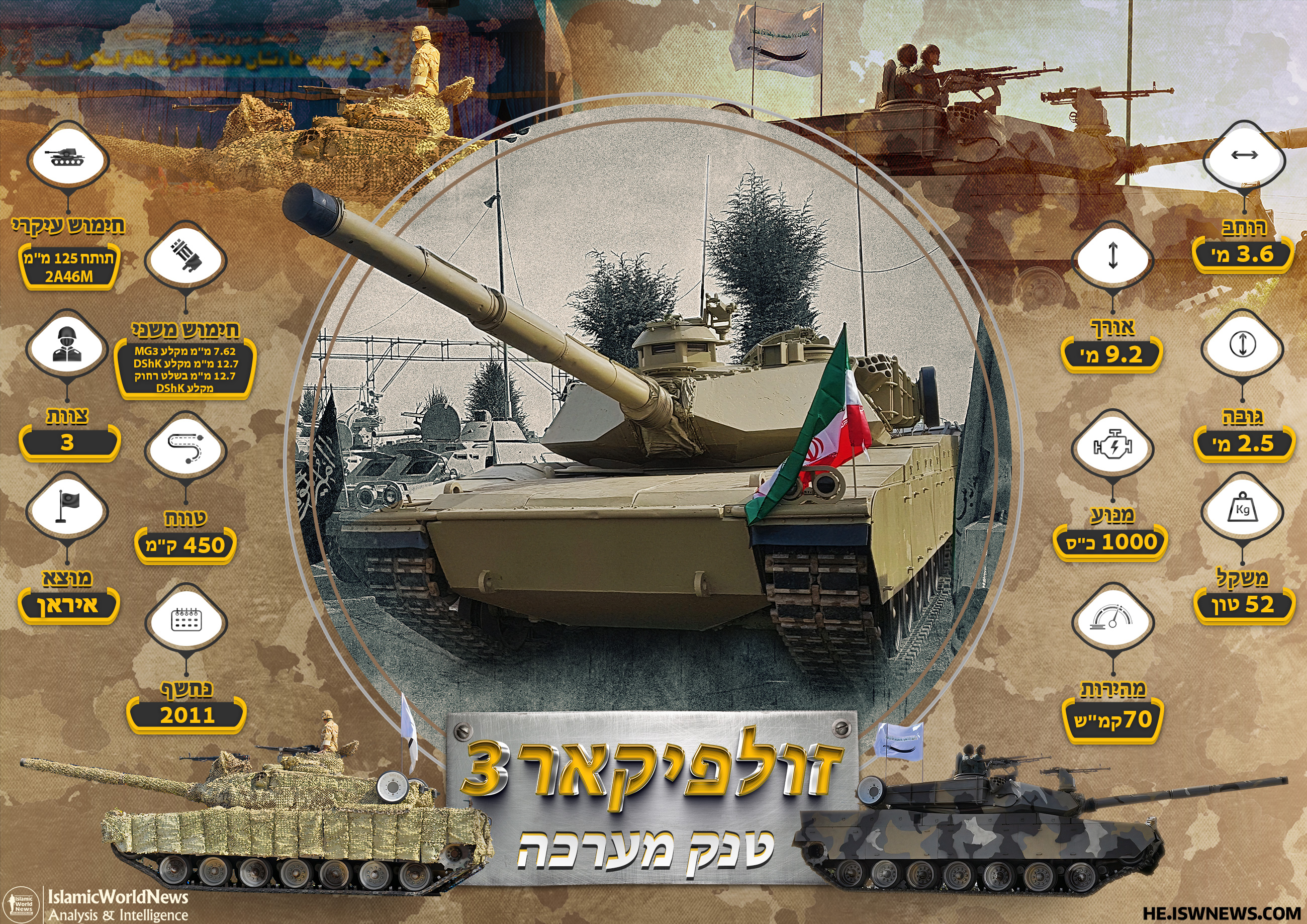
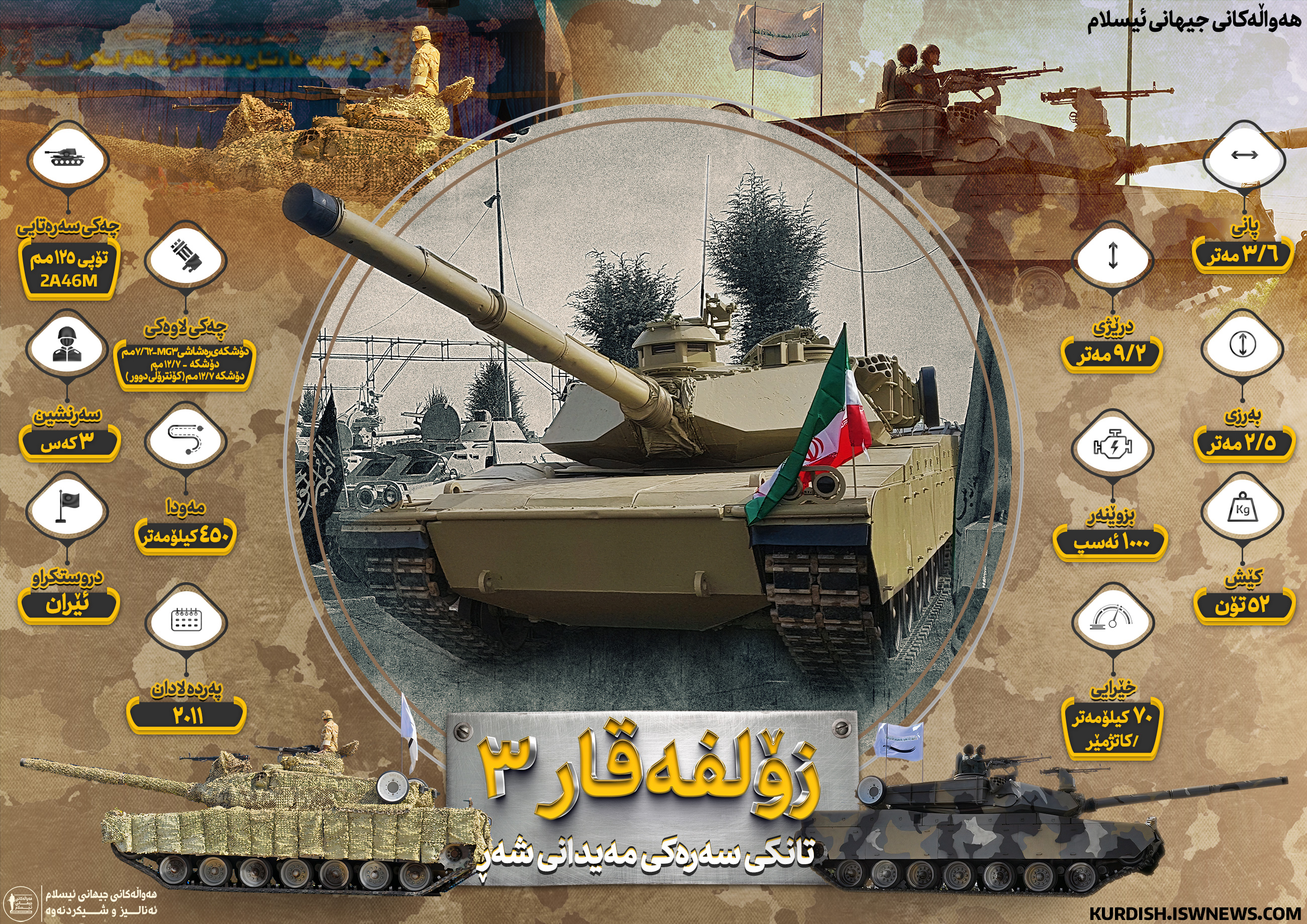
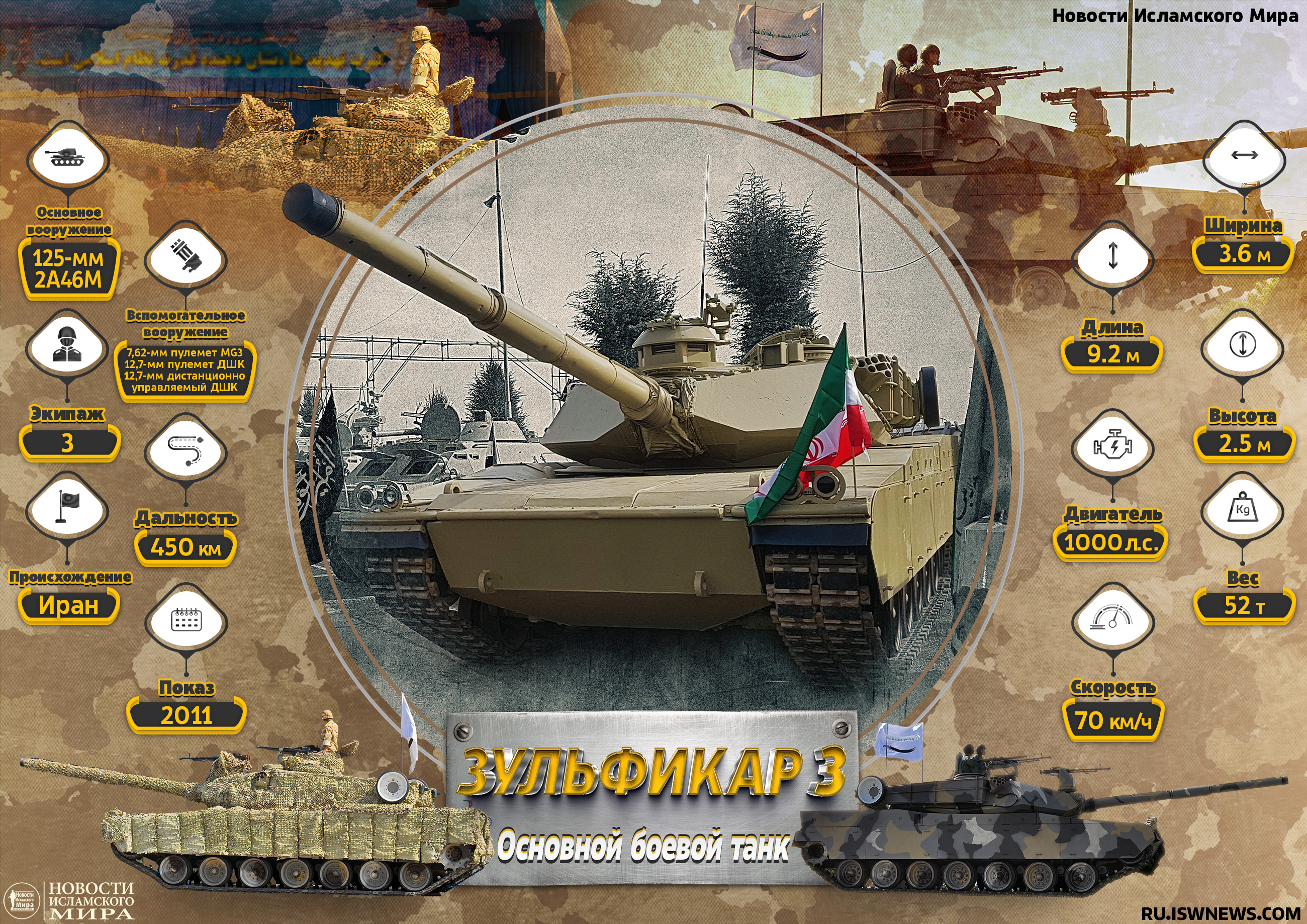
Sources:
ویژگی های نسل جدید تانک ذوالفقار+عکس
Zulfiqar (1993)
بدانیم که … (سایت دستاوردهای ارتش)
تانک ذوالفقار

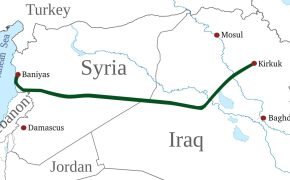
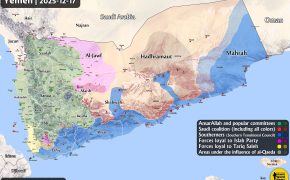
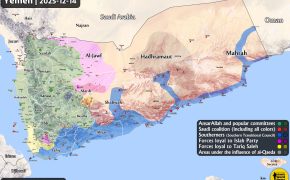
Comment